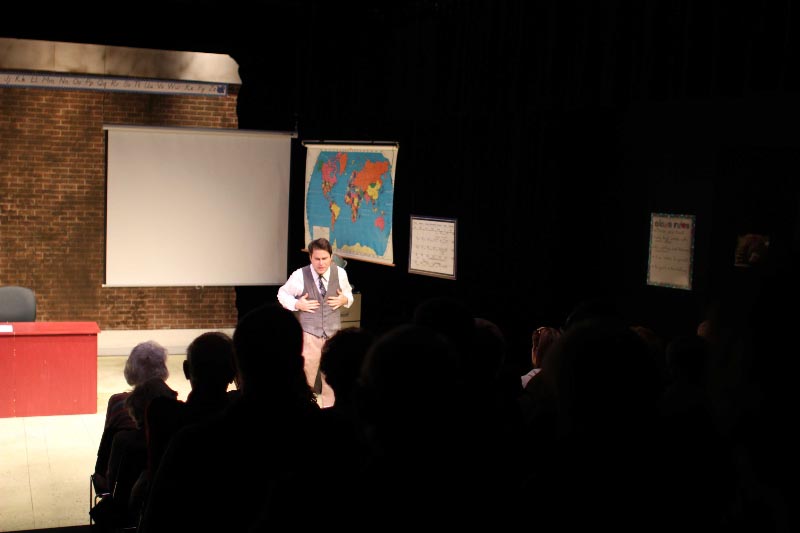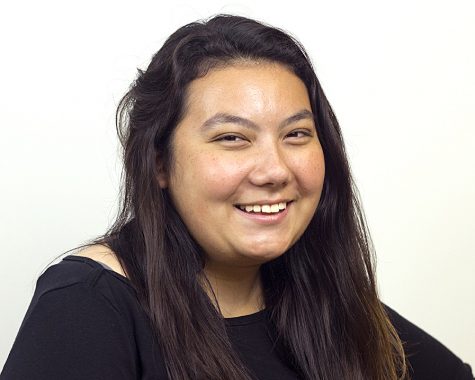Factors considered in Facilities
February 27, 2017
When it comes to Facilities, many factors go into deciding what projects are started and completed as well as what is prioritized.
Last semester, Workgroup No.5 looked at Facilities and made recommendations for them during the vitalization project.
The group recommended several areas receive increased resources to upgrade the look and operation of the campus.
This included an investment in facilities staff and the completion of already started projects.
The number of employees working in Facilities has gone down from 220 in FY15 to 92 in FY17, according to information given to the News by Paul McCann, interim vice president for business affairs.
As the university moves forward, McCann said, it will look at what needs to be done in regards to facilities on campus and what might be beneficial for any number of reasons.
Prioritization
Tim Zimmer, director of Facilities, Planning and Management, said emergency situations, such as an overflowing toilet making a mess, would get immediate attention.
Anything that could impact safety is also highly prioritized.
“We look at things that impact the educational experience, student life experience, we listen to our customers,” Zimmer said.
McCann said the administration prioritizes what needs to be done in a similar way.
“It could be for safety reasons, or we need to do it for comfort reasons,” he said. “If it’s making something pretty and that’s all we’re doing, maybe we’re going to push that off until an appropriation comes through or we get a donation, or until the right times comes to do that.”
Zimmer said Facilities meets with associate vice president for academic affairs Jeff Cross along with the associate deans and every month they talk about the priorities for academic affairs.
“We use their input to help prioritize what we do every day,” Zimmer said. “It’s what important to the customer, because if it’s important to them, it should be important to us.”
Some assignments come up more randomly, like the time Facilities found out it needed to get flags out on Lincoln Avenue for a Transfer Open House.
“If you’re a carpenter and you’re supposed to work on doors over here? Well, if the president’s office thinks of a new priority guess what? Your priorities changed,” Zimmer said.
Some of the recommendations made by Workgroup No.5 will take time to implement as they have not even been discussed and items still need to be prioritized.
“It takes time,” Zimmer said. “How can you do it this spring if you haven’t started discussing it yet?”
There are a series of steps Facilities has to go through before taking on a project.
“We have to tell how much it costs, identify the materials we need, get the labor organized,” Zimmer said. “We have to go through all of the steps and then we can start.”
Though the Workgroup might recommend an action, the people involved yet might not have agreed it upon.
“Once I hear from the president and Paul McCann, everybody else what university thinks is most important, I’ll get started on it,” Zimmer said.
The money for Facilities comes from the campus improvement fee and appropriations, which includes money from the state, tuition and fees, and local fees.
In FY15, total expenses were $15,134,014.26. In FY17, the total budget is $10,336,274.06.
There is money in the budget that is not specifically allocated to any one purpose.
“It’s for current operations and those monies then go to fix the pipes in Thomas or do anything else that we need to do at the time it happens,” McCann said. “…If something breaks, we have to take it out of current operations. We manage facilities like a business, we use the money as we need to.”
Staffing
McCann said the reduction in Facilities staff has been significant.
As a whole, the facilities Workgroup thought staffing was the most important part to look at, Workgroup chair Steven Daniel said.
He said it was this issue that came up often as the Workgroup conducted interviews during the vitalization project.
“The reduced staffing was making it difficult to get projects completed in a timely fashion because they would have to move people from one project to another project rather than just sending people out to do the project, so people are moving around,” Daniels said.
Zimmer said every time Facilities has to pull someone off a job because of an emergency, their efficiency is reduced.
“They go do something for a couple hours then they wonder, where’d I leave off?” he said. “…Ideally we’d like to schedule it, stay on the job, knock it out instead of waiting for an emergency.”
With a larger workforce, Zimmer said, it would be easier to have more flexibility, but he has been “pleasantly surprised” at how much gets done every day, even with reduced staffing.
“There’s people who work harder, that work smarter,” Zimmer said.
Zimmer said people have been understanding of this.
“We also have customers who understand that they can wait,” he said. “(They’ll say) ‘I know that you don’t have money today, have reduced staffing, how about we put that on the back burner until you can handle it?’”
According to the Workgroup’s findings, after the March 12, 2016 layoffs, facilities planning and management groups are responsible for twice, and in some cases three times as much, square feet or acres per FTE when compared to national averages among rather universities.
“This reality has crippled the ability of maintenance shops to do anything except react to emergency repair needs,” the group wrote in its final report.
McCann said people doing more work is a campus-wide scenario.
“We’ve got some very good people in some case they’re having to do some more work that they’ve had to do before but they’re also being compensated for that,” McCann said.
The university has been able to hire people back in some places on a temporary part-time basis with money from appropriated funds and tuition.
“We hired them back based on what needed to be done,” McCann said.
Projects
One recommendation made by the Workgroup is finishing projects that have already been started.
Ceilings removed in Life Science, tape across parts of the south entrance stairway of Lantz Arena, fencing around the south end of McAfee Gym, scaffolding over the north west entrance of McAfee and fencing around a sidewalk at the west end of Douglas are examples of dormant projects Workgroup No.5 cited in its recommendations.
They also included finishing repairs on previously bathrooms in Coleman Hall as a recommendation.
Facilities recently finished fixing Coleman Hall bathrooms, allowing them to reopen in February.
“Vitalization thought it was important, others thought it was important, the president agreed,” Zimmer said.
Zimmer said there was student, faculty and staff interest in fixing the bathrooms. High school students coming to the building for a Scholastic Bowl competition also provided incentive to get them done.
To fix the bathrooms, Facilities already had almost all of the materials they needed and saw it was easy to pick up where they last started.
For other projects, Zimmer said Facilities is willing to be patient, and will let the administration know what their priorities are.
Some projects can wait, Zimmer said, but when they start to fail or break, it rises higher in the priority list.
“If you have this maintenance thing and you just keep putting it off because you don’t have the money or it’s not broken bad enough you have to do it, then you keep deferring it until the point you have to do something,” he said.
Zimmer said several projects were stopped and others were reviewed at several different levels.
“I’ll say the majority of projects were put on hold until we decided what’s most important for the university,” he said.
At the beginning of the budget impasse, Eastern President David Glassman announced a delay of all deferred maintenance and repairs not related to safety as well as a delay to non-capital projects, but Zimmer said there are several reasons deferred maintenance might occur.
“There are no two reasons exactly the same, it’s hard to say there’s one reason we have deferred maintenance,” Zimmer said. “It’s not just one reason we held off on projects.”
Daniels said deferred maintenance was an issue the Workgroup discussed during the vitalization project.
“We’ve got a lot of need for things to be fixed, not a lot of resources to fix them,” he said.
Zimmer said from a university-wide perspective, if there is not enough money, there has to be prioritization, not just in facilities.
“Let’s say that I spent $4 million dollars on projects, then that $4 million dollars was not available to hire faculty,” Zimmer said. “Which is more important to the university, is it $4 million for projects or is it to have faculty in the classrooms?”
McCann said one thing the university has been trying to work on is the Life Science Building, which is a fairly major project.
“We asked for state money to do that, they’ve never come through with that, so we’re trying to do that project on our own. It’s a very expensive project, very extensive project,” he said.
Other projects, such as leaks in buildings that need to be fixed, will not be done until the university is given an appropriation, but McCann said this does not mean the university will stop fixing things.
McCann said an appropriation would help, but the university is trying to address what it can with the money it does have.
This includes working on and updating some classrooms to put in more modern touches.
“We’re trying to identify the things that are smaller bites that we can fix,” McCann said. “…We’re going to do the best we can, but those major projects are not moving forward very fast right now.”
While the university has stopped some projects, others have been stopped because they were funded by the Capital Development Board.
These projects include the elevator projects in Student Services and McAfee Gym, sidewalk paving projects and automatic doors in Buzzard Hall.
The Capital Development Board gets money from the state to take care of assets of the state.
McCann said periodically, the university can get the board to take care of its assets, but for multiple years the Capital Development Board has not been able to do much because it has not received an appropriation.
“The state stopped (the funding) because their appropriation stopped too, just like ours did,” McCann said. “…Legislators decided not to fund that. They want to pay for social services; they want to pay the pension they want to pay for operation in the department of corrections. They don’t have enough money to give it to everybody that they want to.”
While Workgroup No.5 suggested Eastern take control of and finish the projects, McCann said he does not know whether the university could do that or not.
“We’d have to take on any liability that’s been created in that project, we don’t know exactly where that project is,” he said. “They know what they’ve done, what they haven’t done; they’ve got the design, architect, engineers, we do not.”
Zimmer said it would be great it they were able to finish it.
“I’d like to have those elevators and the stuff that they’ve got stored out there on the ground, and they’ve got stored outside of McAfee and the construction fence outside of McAfee and the sidewalk,” Zimmer said. “I’d like to have all that stuff back, but I can’t impact it.”
Cassie Buchman can be reached at 581-2812 or cjbuchman@eiu.edu.

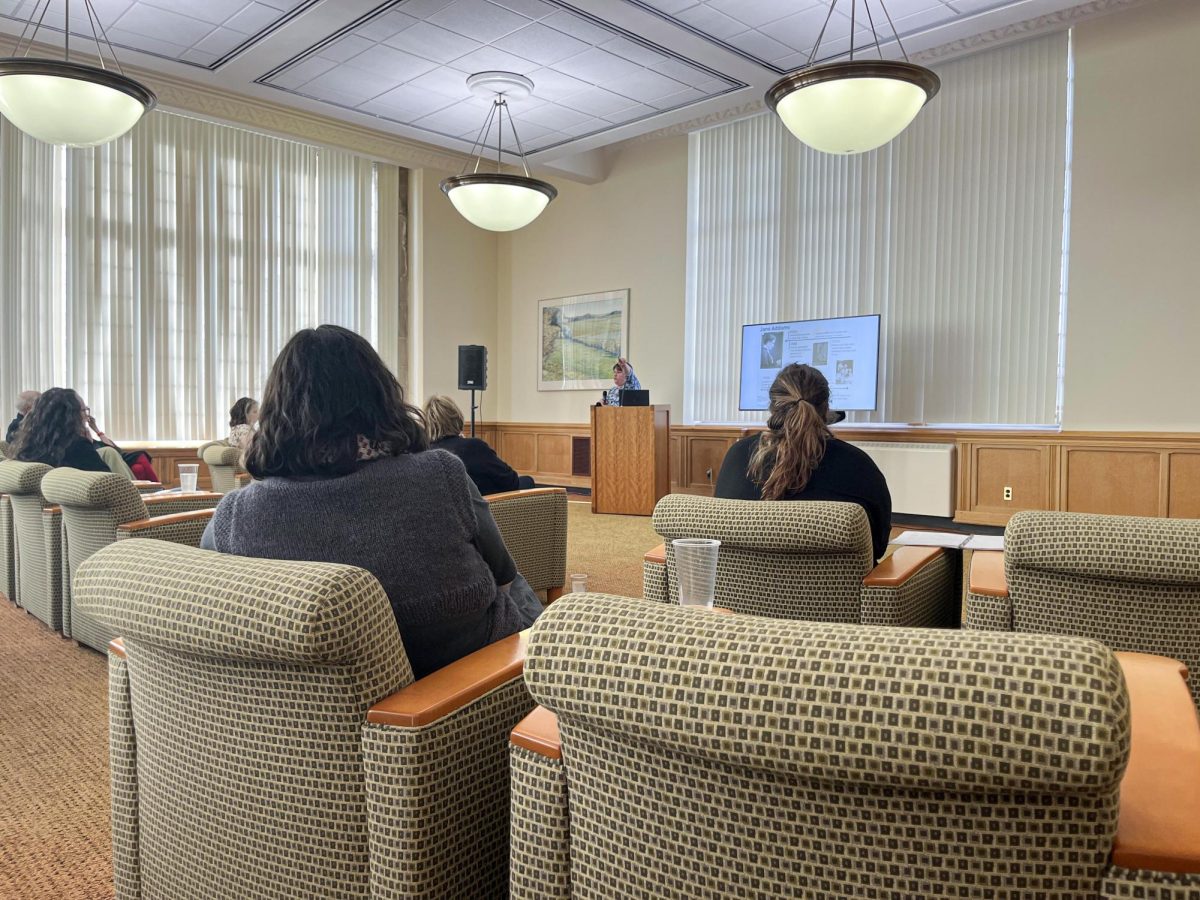
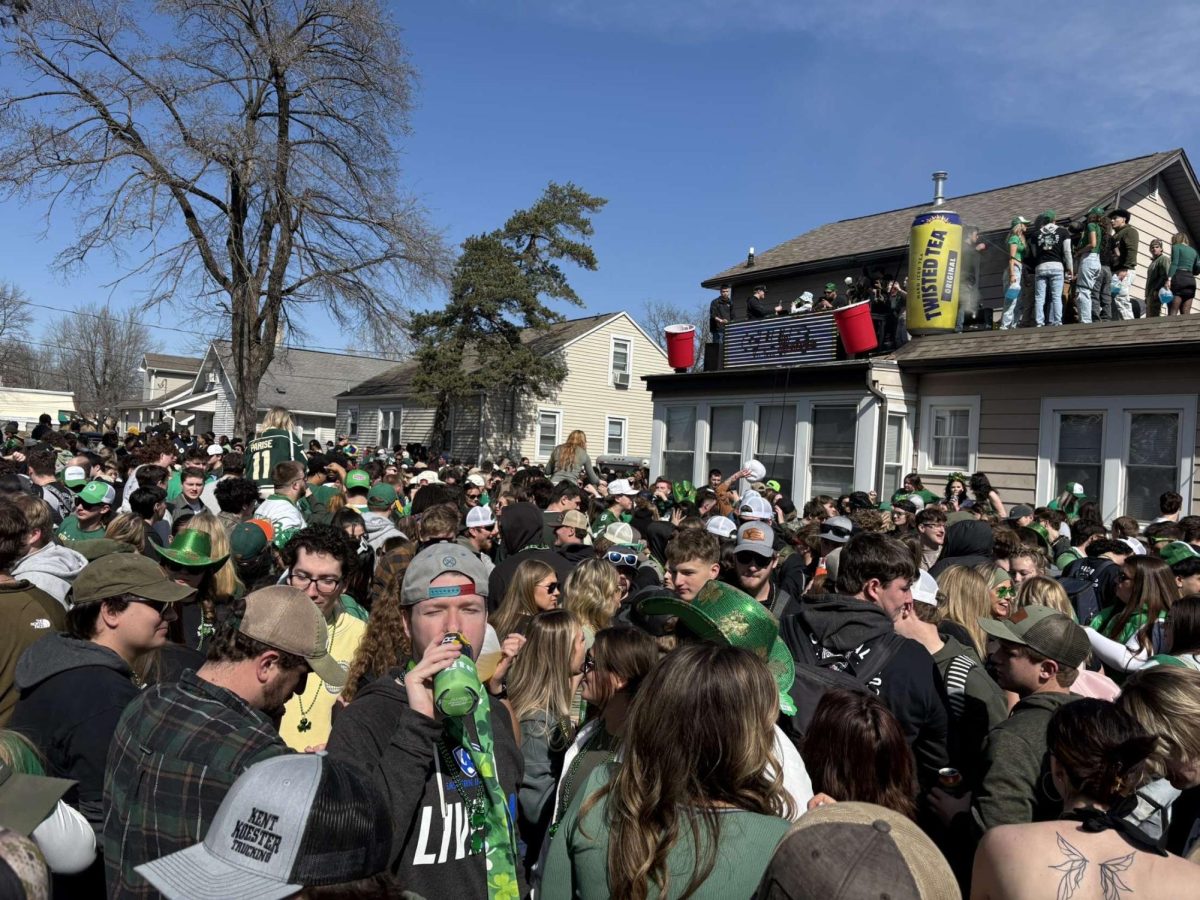

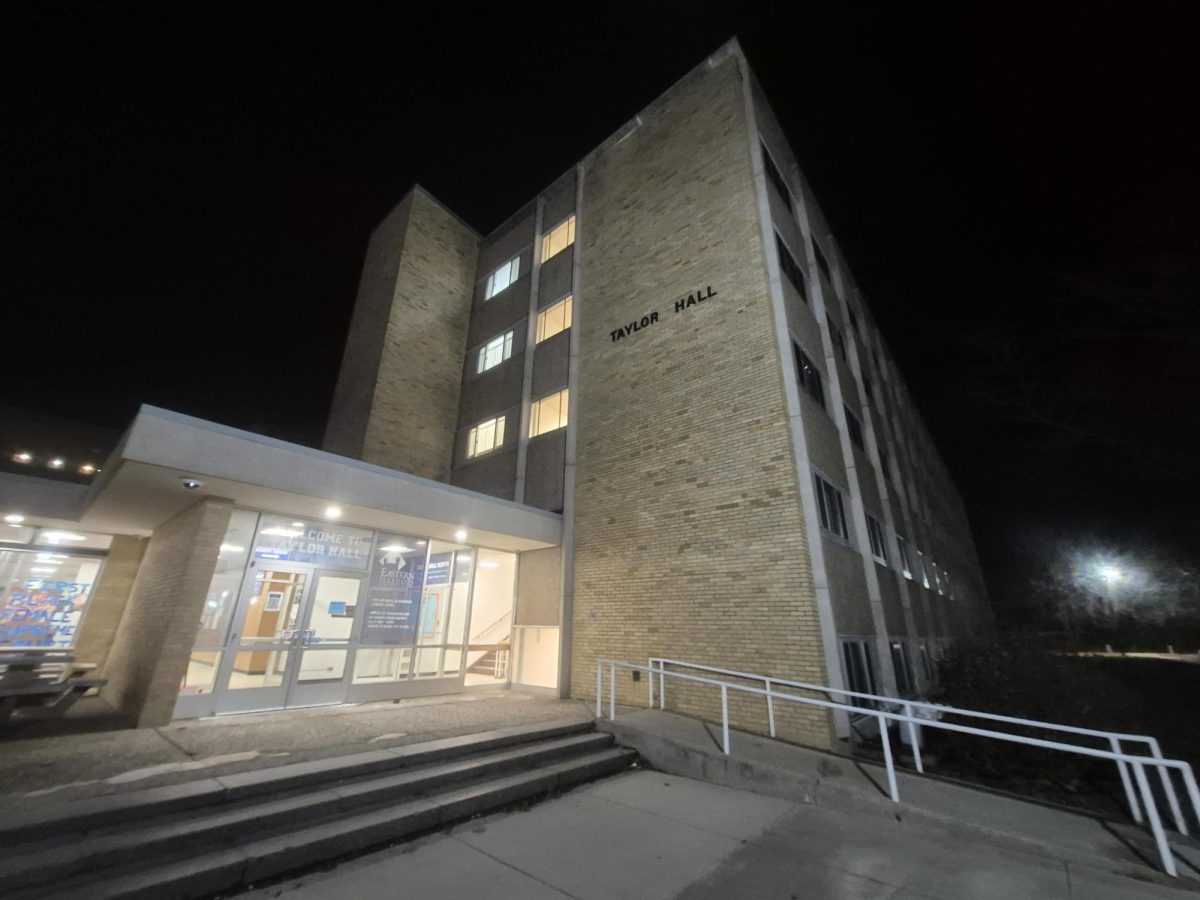
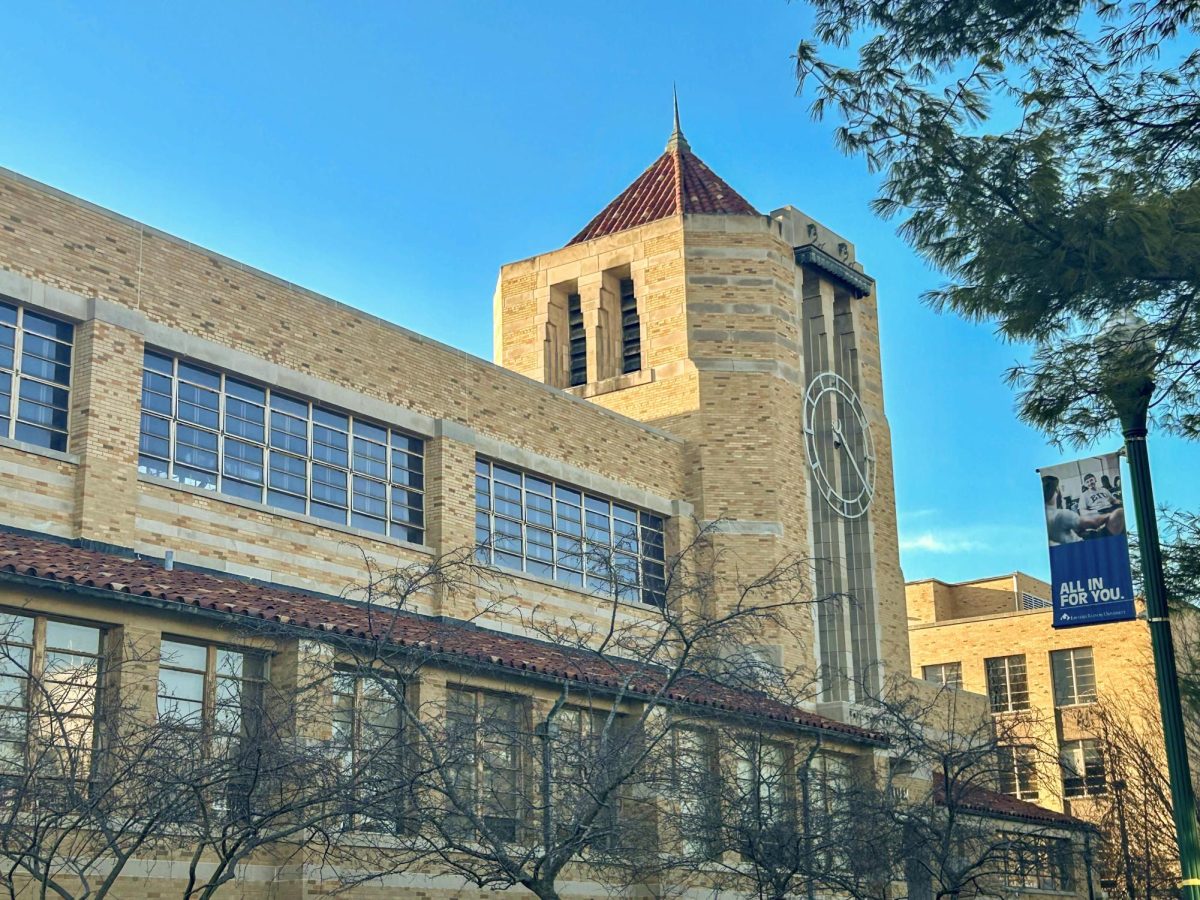
![[Thumbnail Edition] Eastern Illinois University baseball's hitting coach and recruiting coordinator Mike Pugliese urges players on the team to increase their effort after a slow start to its pregame routine at the team's first intrasquad scrimmage of the season at O'Brien Field on Jan. 31, 2025.](https://www.dailyeasternnews.com/wp-content/uploads/2025/03/BB_02_O-1-e1741909628540-1200x702.jpg)
![[Thumbnail Edition] Senior tennis player Luisa Renovales Salazar hits the tennis ball with her racket at the Darling Courts at the Eastern Illinois University campus in Charleston, ILL.](https://www.dailyeasternnews.com/wp-content/uploads/2025/03/Tennis_01_O-1-e1741807434552-1200x670.jpg)


![[Thumbnail Edition] Senior right-handed pitcher Tyler Conklin pitching in the Eastern Illinois University baseball team's intrasquad scrimmage at O'Brien Field in Charleston, Illinois on Jan. 31.](https://www.dailyeasternnews.com/wp-content/uploads/2025/03/TC_01_O-e1741567955534-1200x669.jpg)

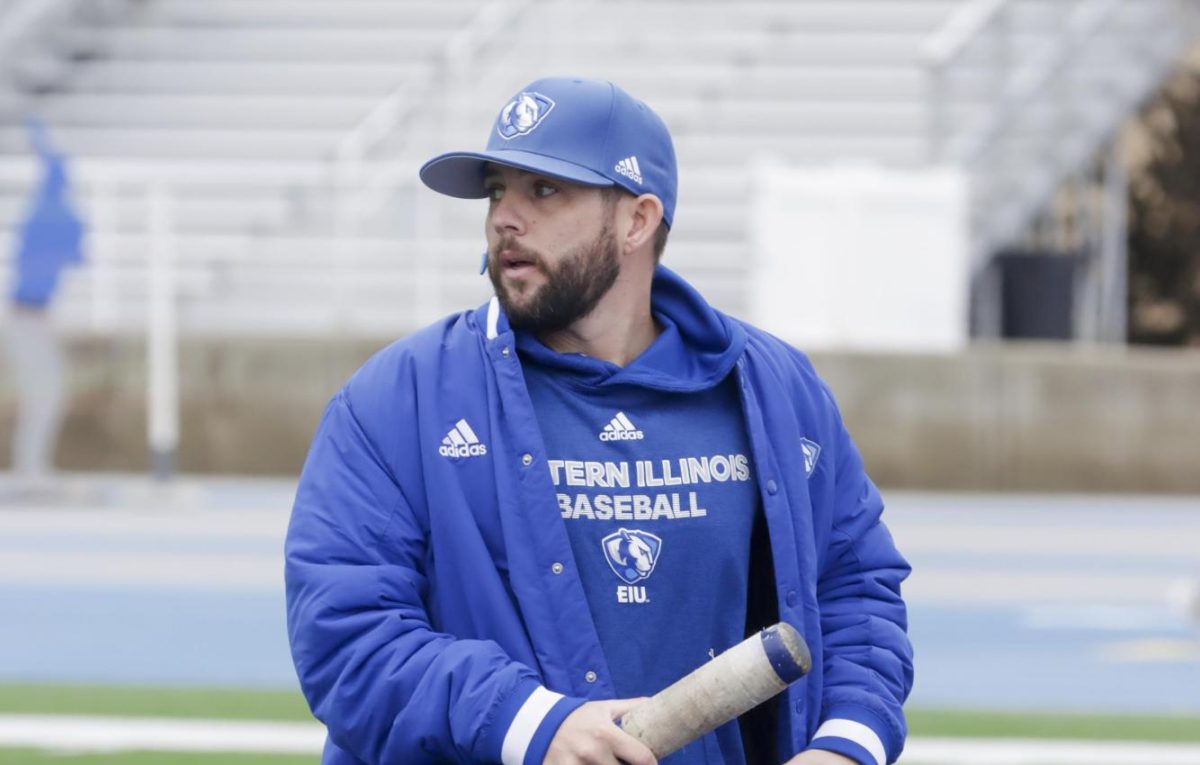
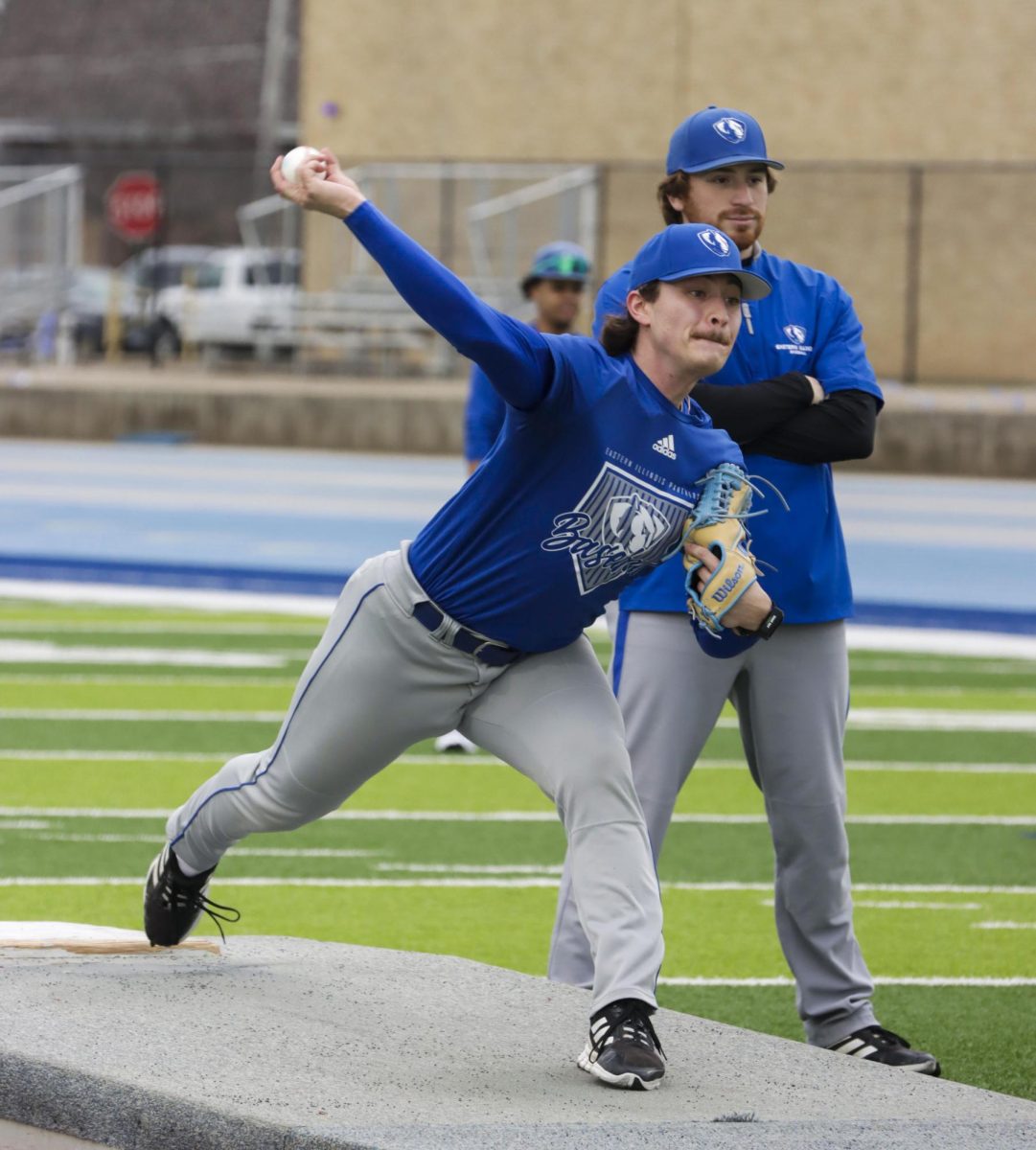


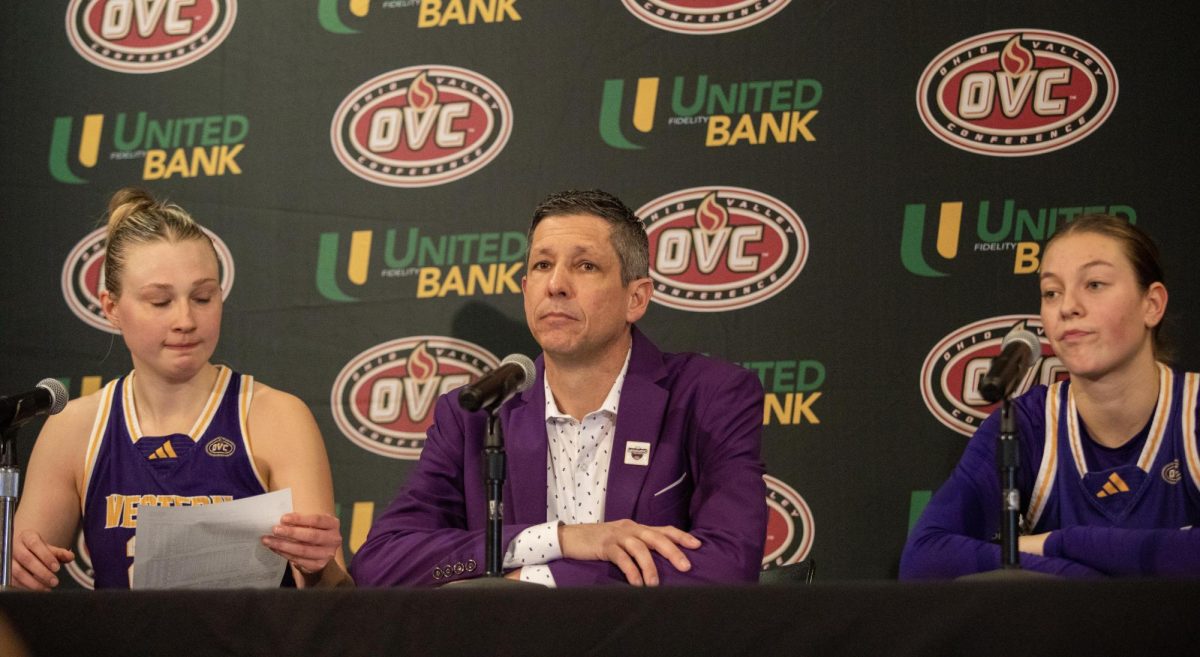
![[Thumbnail Edition] Senior, forward Macy McGlone finds an open teammate to pass the ball too during the game against the Tennessee State Tigers 69-49, in Groniger Arena on the Eastern Illinois University campus, Charleston Ill.](https://www.dailyeasternnews.com/wp-content/uploads/2025/03/WBB_02_O-1-e1741228987440-1200x692.jpg)


















![E[Thumbnail Edition] Eastern Illinois softball freshman utility player Abbi Hatton deciding to throw the softball to home plate in a fielding drill during softball practice at the field house in Groniger arena on Tuesday Feb. 11.](https://www.dailyeasternnews.com/wp-content/uploads/2025/03/SB_03_O-e1741208880750-1-e1741209739187-1200x815.jpg)

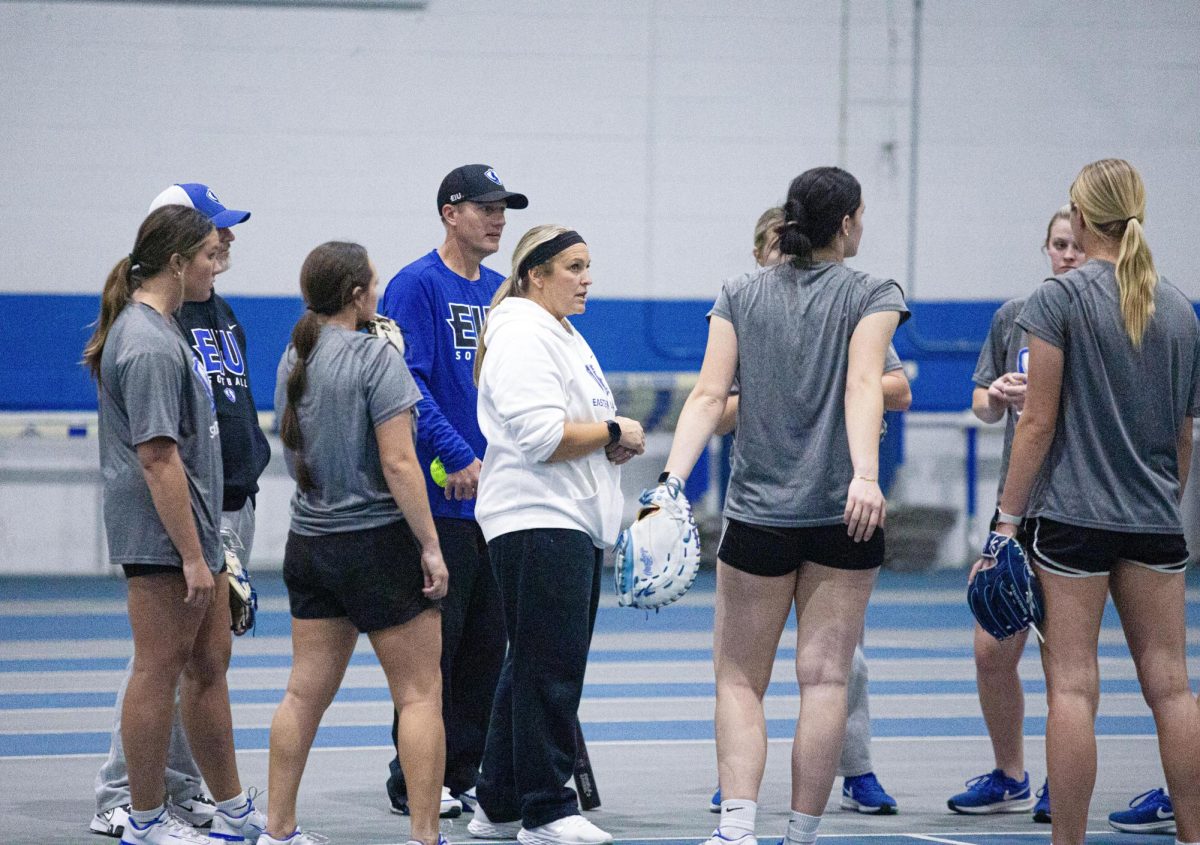
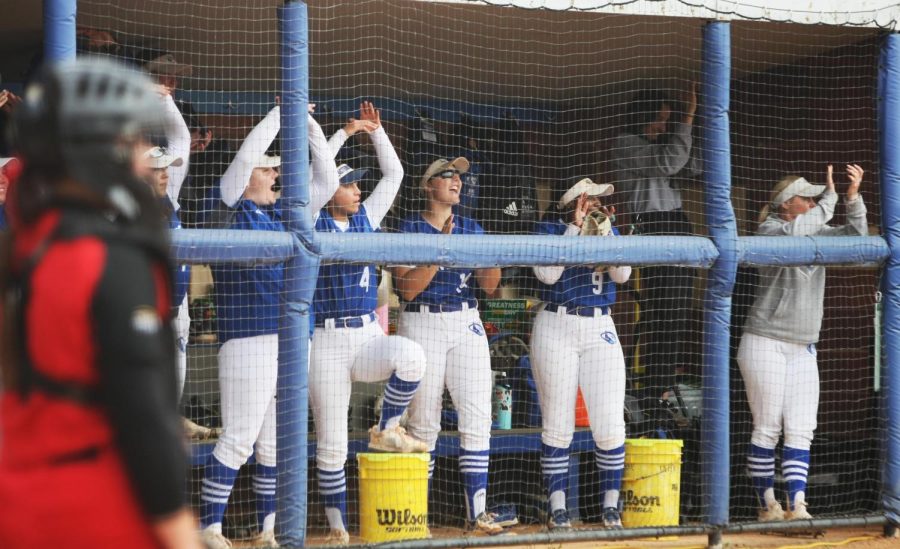













![The Weeklings lead guitarist John Merjave [Left] and guitarist Bob Burger [Right] perform "I Am the Walrus" at The Weeklings Beatles Bash concert in the Dvorak Concert Hall on Saturday.](https://www.dailyeasternnews.com/wp-content/uploads/2025/03/WL_01_O-1200x900.jpg)
![The team listens as its captain Patience Cox [Number 25] lectures to them about what's appropriate to talk about through practice during "The Wolves" on Thursday, March 6, in the Black Box Theatre in the Doudna Fine Arts Center in Charleston, Ill.](https://www.dailyeasternnews.com/wp-content/uploads/2025/03/WolvesPre-12-1200x800.jpg)


